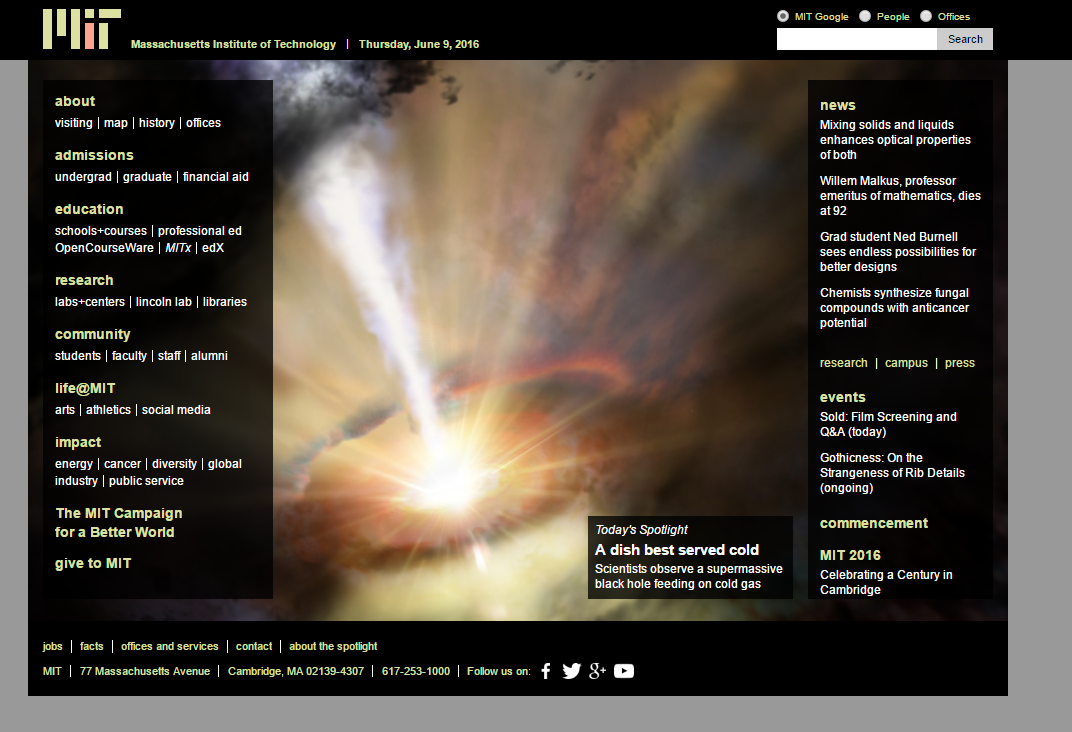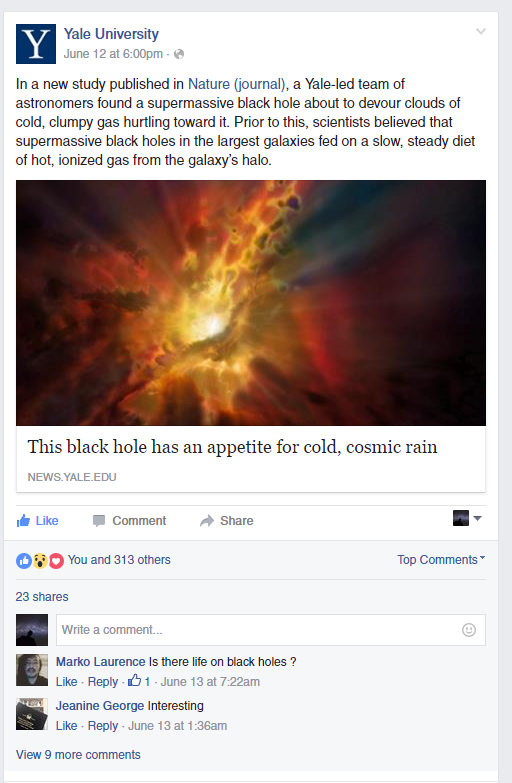We're reporting an exciting result in the new issue of Nature. You can read our paper here (free).
An international team of astronomers using the Atacama Large Millimeter/submillimeter Array (ALMA) has witnessed a never-before-seen cosmic weather event - a cluster of towering intergalactic gas clouds raining in on the supermassive black hole at the center of an elliptical galaxy one billion light-years from Earth.
The new ALMA observations are the first direct evidence that cold, dense gas clouds can coalesce out of the hot intergalactic gas and plunge into the heart of a galaxy to feed its central supermassive black hole. They also reshape astronomers' views on how supermassive black holes feed through a process known as accretion.
Previously, astronomers believed that, in the largest galaxies, supermassive black holes fed on a slow and steady diet of hot ionized plasma from the galaxy's halo. The new ALMA observations show that, when the intergalactic weather conditions are right, black holes can also gorge on a clumpy, chaotic downpour of giant, very cold molecular gas.
"This so-called cold, chaotic accretion has been a major theoretical prediction in recent years, but this is one of the first unambiguous pieces of observational evidence for a chaotic, cold 'rain' feeding a supermassive black hole, said Dr. Grant Tremblay, an astronomer with Yale University in New Haven, Connecticut, and lead author on a paper appearing in the journal Nature. It's exciting to think we might actually be observing this galaxy-spanning 'rainstorm' feeding a black hole whose mass is about 300 million times that of our Sun."
Tremblay and his team used ALMA to peer into a phenomenally bright cluster of about 50 galaxies, collectively known as Abell 2597. At its core is a singular massive elliptical galaxy, pragatically dubbed the Abell 2597 Brightest Cluster Galaxy. Suffusing the space between these galaxies is a diffuse atmosphere of hot, ionized plasma, which was previously observed with NASA's Chandra X-ray Observatory.
"This very, very hot gas can quickly cool, condense, and precipitate in much the same way that warm, humid air in Earth's atmosphere can spawn rain clouds and precipitation", Tremblay said. "The newly condensed clouds then rain onto the galaxy, fueling star formation and feeding its supermassive black hole."
Near the center of this galaxy, the researchers discovered this exact scenario: three massive clumps of cold gas careening toward the supermassive black hole in the galaxy's core at 300 kilometers per second (roughly 670,000 miles per hour). Each cloud contains as much material as a million Suns and is tens of light-years across.
Normally, objects on that scale would be difficult to distinguish at these cosmic distances, even with ALMA's amazing resolution.
They were revealed, however, by the billion light-year long "shadows" they cast toward Earth. These shadows, known as absorption features, were formed by the in-falling gas clouds blocking out a portion of the bright background millimeter-wavelength light, which is emitted by electrons spiralling around magnetic fields very near the central supermassive black hole.
Additional data from the National Science Foundation's Very Long Baseline Array indicate that the gas clouds observed by ALMA are approximately 300 light-years from the central black hole, essentially teetering on the brink of being devoured, in astronomical terms.
Official & Institutional press releases:
Blogs, Podcasts, & Discussions:
About Abell 2597 and its central galaxy
Abell 2597 is a "cool core" cluster of galaxies about one billion light years from Earth. At its very center is an enormous elliptical galaxy, called the Abell 2597 Brightest Cluster Galaxy (BCG), which we observed with ALMA.
The spectacularly beautiful A2597 BCG has been well-studied over the years. Some papers on A2597 are listed below.
- Residual cooling and persistent star formation amid AGN feedback in Abell 2597 (Tremblay et al. 2012a)
- Multiphase signatures of AGN feedback in Abell 2597 (Tremblay et al. 2012b)
- A2597: another massive cooling flow (Crawford et al. 1989)
- Low-frequency radio observations of X-ray ghost bubbles in A2597 (Clarke et al. 2005)
Also, check out these very prescient, beautiful papers on that are closely related to our new ALMA observation:
- Detection of extended HI absorption toward PKS 2322-123 in Abell 2597 (O'Dea et al. 1994)
- HI absorption toward the Nucleus of the Radio Galaxy PKS 2322-123 in A2597 (Taylor et al. 1999)
- Molecular gas in the neartest X-ray bright group NGC 5044 as revealed by ALMA (David et al. 2014)
- Chaotic cold accretion on to black holes in rotating atmospheres (Gaspari et al. 2015)
- Chaotic cold accretion on to black holes (Gaspari et al. 2013)
About ALMA
The Atacama Large Millimeter/submillimeter Array (ALMA) is one of the most powerful telescopes in the world, opening new eyes on the cold and distant Universe. You can read more about ALMA here.






















